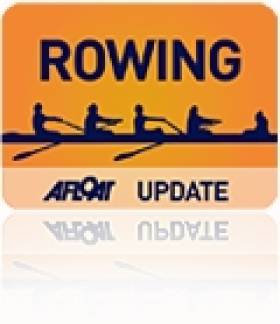Displaying items by tag: Ireland Teams
Ireland Under-23 and Junior Teams Named
#Rowing: Two men’s crews – a men’s coxed four and a lightweight quadruple – have been selected to represent Ireland at the World Under-23 Championships in Florida at the end of the month, July 24th to 28th. Two women’s crews, a four and lightweight double, have been pre-selected.
The junior men’s coxed four and junior women’s double have been selected for the World Junior Championships in Tokyo in August, and four junior women’s crews and one junior men’s are selected for the Coupe de la Jeunesse, the European junior tournament in Italy at the start of August.
Ireland Under-23 and Junior Teams
Under-23 World Championships, Sarasota-Bradenton, Florida, July 24th-28th
Men
Four, coxed: B O’Rourke, D Lynch, R Corrigan, J Quinlan; cox: E Finnegan.
Lightweight Quadruple: E Gaffney, H Sutton, R Ballantine, M Taylor.
Women (Pre-Selected Crews)
Four: C Feerick, E Lambe, T Hanlon, E Hegarty
Lightweight Double: A Casey, C Nolan
World Junior Championships, Tokyo August 7th – 11th
Junior Men
Four, coxed: M Gallagher, J O’Donovan, J Dorney, J Kearney; cox: L O’Regan
Junior Women
Double Sculls: M Curry, R O’Donoghue
Coupe de la Jeunesse, Corgeno, Italy, August 2nd-3rd
Junior Men
Quadruple: A Sheehan, T Kelly, F O’Reilly, R O’Neill
Junior Women
Four: L O’Brien, N Kiely, S Daly, A Daly
Pair: C O’Sullivan, J Duggan
Sculling, Quadruple: A Tyther, S Scully, A Lynch, L McCoy
Double: G Healy, C Kirwin
#ROWING: Ireland’s junior teams for the Coupe de la Jeunesse and the Home International Regatta have been named. Based on performances at the European Junior Rowing Championships, Rowing Ireland decided not to send a team to the World Junior Championships.
Crews listed have been selected on the basis of performances at trials throughout the year, and on the provision that they show continued improvement in performance levels.
A plan will be drawn up by so that all selected junior crews will get in training days mid-week where possible when schools are out or over weekends prior to the Irish Championships. Crews will go into training camp after the Irish Championships up to the departure dates for competition.
Coupe de la Jeunesse, Libourne, France. 1st – 3rd Aug 2014
Women
Junior Double Sculls: Eimear Lambe (Commercial RC), Jasmine English (Belfast BC)
Junior Quadruple: Emily Hegarty (Skibbereen RC), Aoife O’Keeffe (Cork BC), Claire Beechinor (Cork BC), Kirsty Turner (Belfast BC)
Junior Single: Erin Barry (Bann RC)
Junior Pair: Oisin Forde, Dervla Forde (Cork BC)
Men
Junior Double: David O’Malley (St Michael’s RC), Connor Carmody (Shannon RC)
Quadruple: Colm Hennessy (Shandon BC), Eoghan Whittle (Castleconnell BC), Patrick Munnelly (Athlone BC), Andrew Goff (Waterford BC)
Pair: Brian Keohane (Presentation RC), David Keohane (Presentation RC)
Home International, NRC, Cork (Sat 26th July)
Note: Line ups to be decided by coach of each crew, this will be finalised in the next week.
Junior Men Sweep Team: Adam Browne (Shannon RC), Patrick O’Connor (St Michaels RC)
Ciaran Higgins/Thomas Higgins (Cork BC)
Alex Coyne/Darragh McCarthy (Col Iognaid RC)
Kevin Fallon/Jack Bennett (St Josephs RC)
Luke Rigney/Donal Coen (Col Iognaid RC)
Junior Men Sculling Team;
Shane Mulvaney (Neptune RC)
Fintan McCarthy (Skibbereen RC)
Daniel Begley (Shandon BC)
David Synnott (Lee RC)
Sean Dennehy (Cork BC)
Stephen O’Sullivan (Shandon BC)
Dylan McCarthy (Skibbereen RC)
Junior Women Sweep team;
Niamh Casey, Ellen McCarthy (Skibbereen RC)
Kara O’Connor, Holly Hickey (Muckross RC)
Ciara Davis, Ciara O’Dwyer (Shannon RC)
Katie Nagle/ Fiona O’Keeffe (Shandon BC)
Naomi Wray/ Francesca Morelli (Bann RC)
Junior Women sculling team;
Aisling Rodger (Commercial)
Sarah Murphy (St Michaels RC)
Megan McLaughlin (Cork BC)
Alison Mooney (Offaly RC)
Carrie Nolan (New Ross BC)
Eimear Cummins (Lee RC)
Brega Mullan (Bann RC)
























































